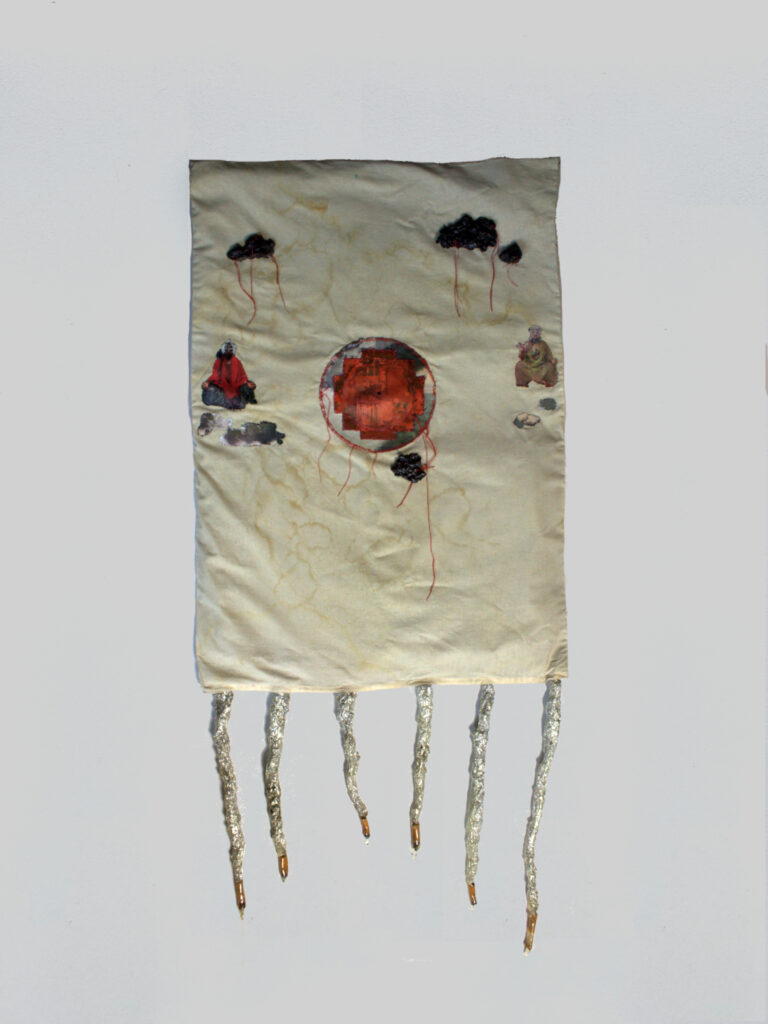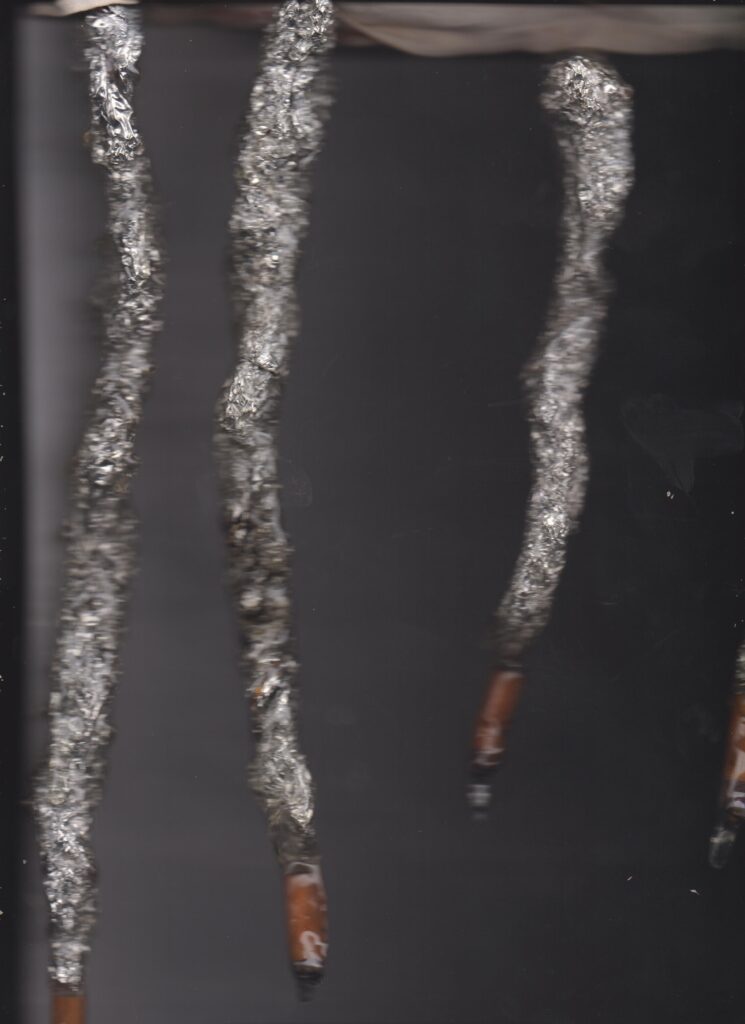Works
code>45” x 19 1/2” x 1”
digital photo collage on cotton, used pillow case, transfer paper, aluminum foil, aluminum leaf, epoxy resin, lightning-burnt tree bark, cigarette butts, thread, ink, blood (artist’s)
2022I have been researching the problem of the inaccessibility of beautiful and comfortable dwelling places-- and the forced relegation to derelict and psycho-aesthetically distressing environment-- to the most vulnerable demographics of the city. <em>Transubstantiation </em>is a visual totem for the democratization of aesthetically uplifting psychogeographies. Images of spaces in Vancouver catering to the wealthy (a private members club, a high end restaurant downtown) and images of spaces for the very poor (the Balmoral and the St. Helen’s—two notoriously derelict government funded single room occupancies which I visited frequently during my time living in an SRO and in homeless shelters) are juxtaposed as social commentary and effigy for psychogeographic equanimity.




